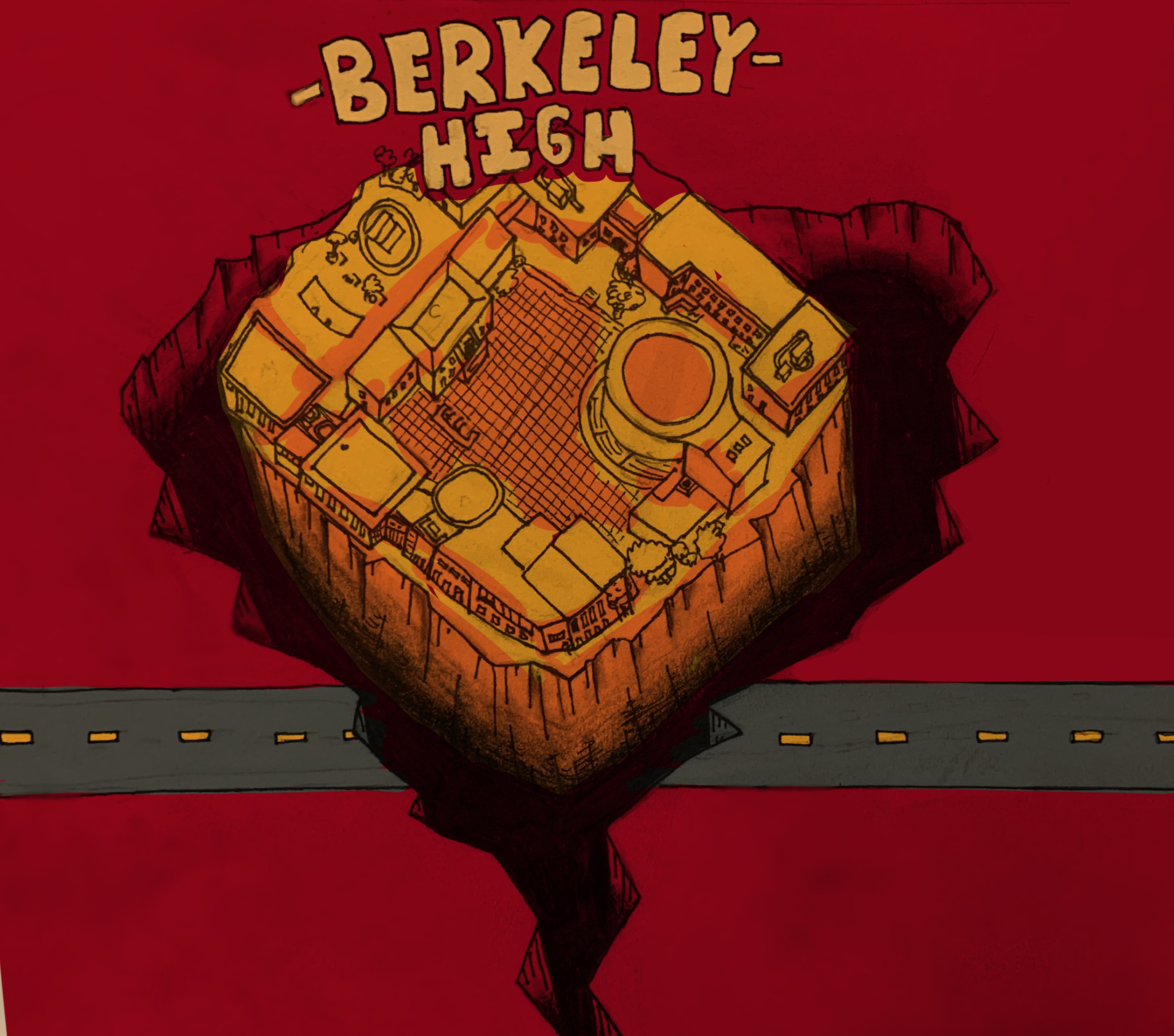Waking up at 2:00 a.m. and feeling the room shaking is not pleasant. Then going to school and hearing the whispers of “did you feel the earthquake last night?” and “is this building really that safe?” does not make the feeling any better. Berkeley High School is old, having some buildings that have been standing for over one hundred years. From a historical standpoint, that is a cool piece of information, but from a safety perspective, it proves more of a concern.
In the world there are thousands of earthquakes a year, and in just southern California thousands of small earthquakes. California is known as an earthquake state, with huge disastrous events such as the San Francisco earthquake in 1906 and the Eureka earthquake in 1980. Berkeley itself is situated on the Hayward Fault Zone. Earthquakes are a serious concern for Berkeley residents, especially those sending their kids into old school buildings on the daily hoping to keep them safe.
Earthquakes happen because the earth is split up of flexible tectonic plates that are essentially floating on the molten rock that makes up our earth. These plates move around crashing into each other and creating faults that are able to store energy. When that built-up energy gets released it results in an earthquake. California gets so many earthquakes because there are so many faults — areas in between tectonic plates — scattered around and running through the state.
According to Berkeley Unified School District, all of BHS is earthquake-safe. With emergency plans in place and resources just in case, BUSD feels that BHS is extremely well prepared. All teachers and staff are trained in the event of an earthquake and all students must take part in earthquake safety drills, including the Great Shakeout. While this is all true, BHS’s very old buildings may still be disconcerting for some students.
Having classes in an extremely old building, such as the C Building which is a place where almost every student will take a class during their time at BHS, can cause worry for some students, even though the building is not unstable or unsafe. This is especially worrisome as the next big earthquake becomes a question of when rather than if. The United Geological Survey reported that a major quake is likely due before 2032. Even if a building is earthquake-safe, is that enough to protect students from a massive earthquake?
Earthquakes are unpredictable, which is one of their scariest factors. Earthquakes are not going to go over well for the procrastinator, so make sure you know what to do when one hits.
Climate change, while not the biggest earthquake causer, is becoming increasingly problematic. According to NASA, large changes in water, such as heavier rain seasons or droughts can affect earthquake risk. Droughts, something every Californian has lived with, can negatively impact faults. The drought paired with the groundwater pumping can lead to significant stress impacts on the faults. While all of this is true, some might consider these changes insignificant as they have only led to small-scale earthquakes thus far. Earthquakes are unpredictable however, and in the future, with all the added stress it is not a stretch to assume they might get worse as time goes by.
Even when knowing BHS is following saftey protocols, it can be hard to make the fear of earthquakes go away. However, while earthquakes are unpredictable, our response doesn’t have to be. By preparing now, we can choose resilience over risk and turn “what if” into “we’re ready.” That way if the ground starts to shake and things begin to fall, our plans and knowledge of what to do will keep us steady.





